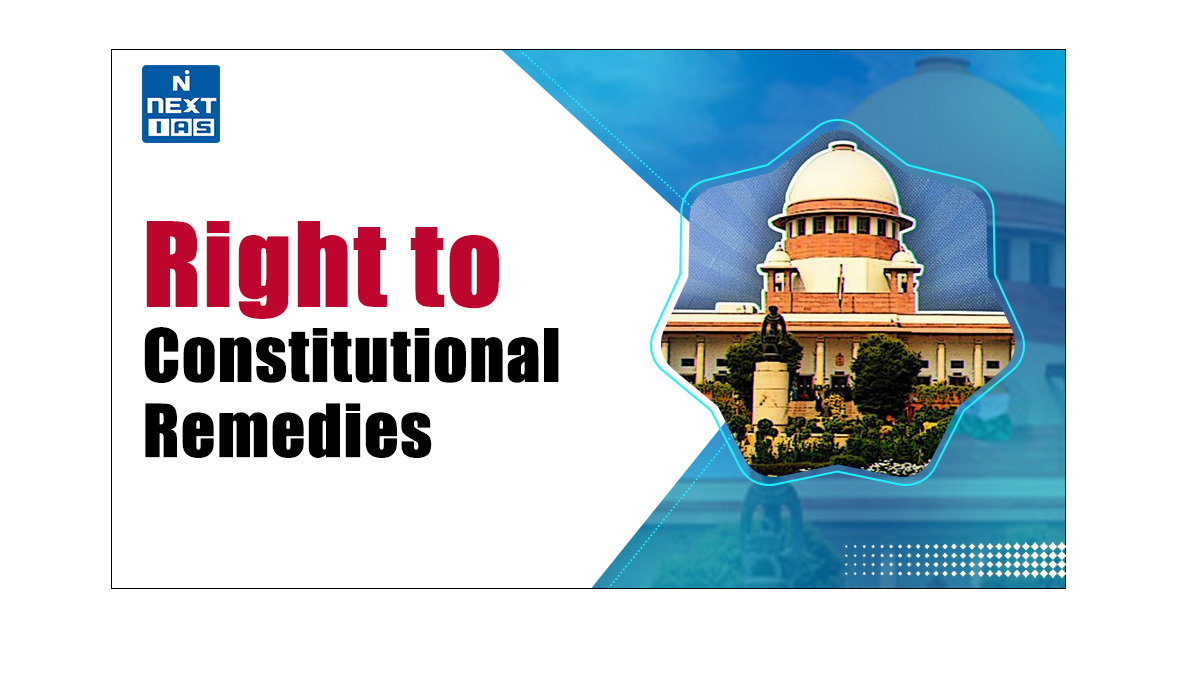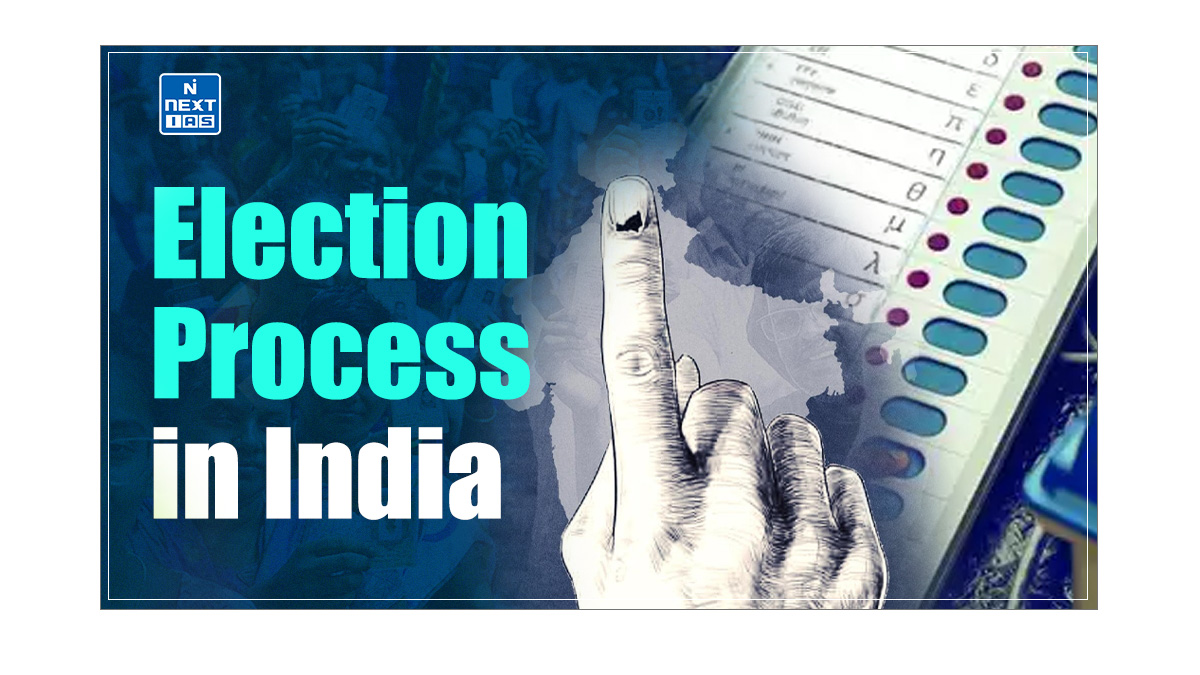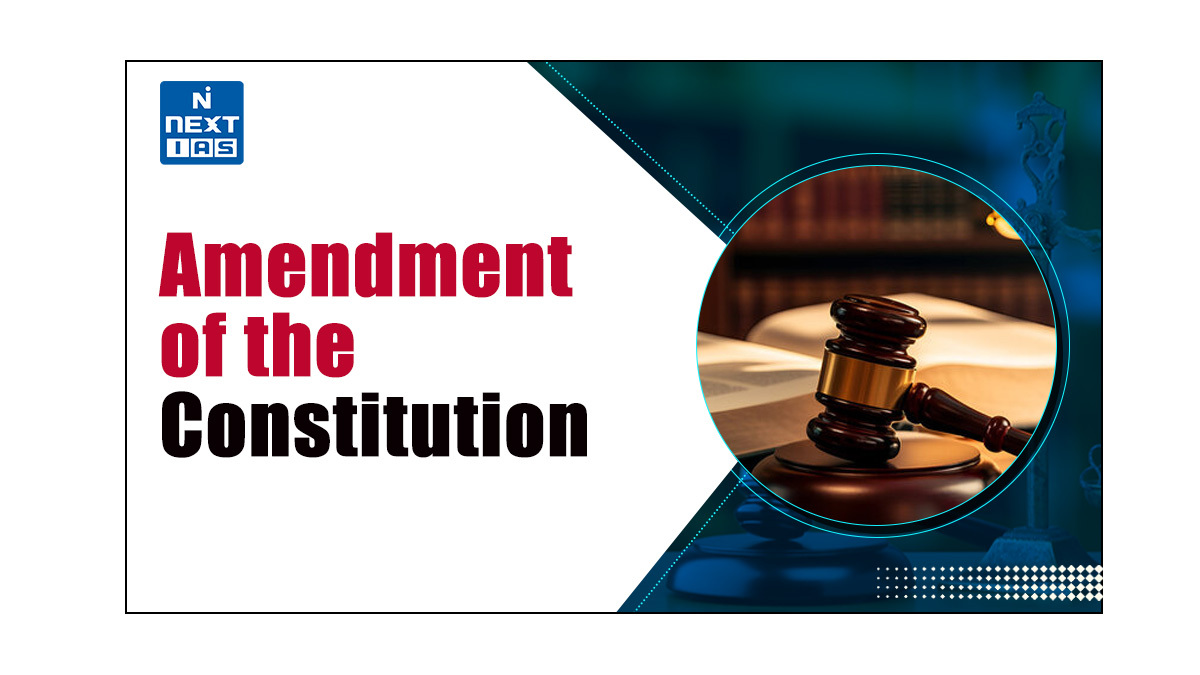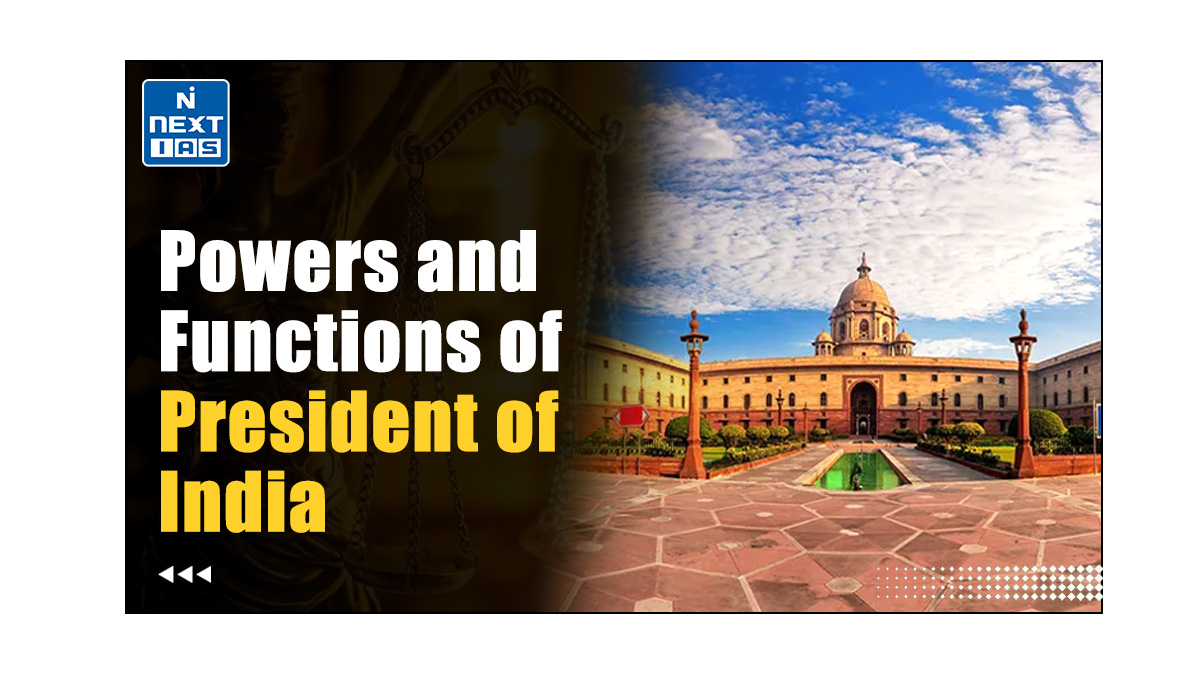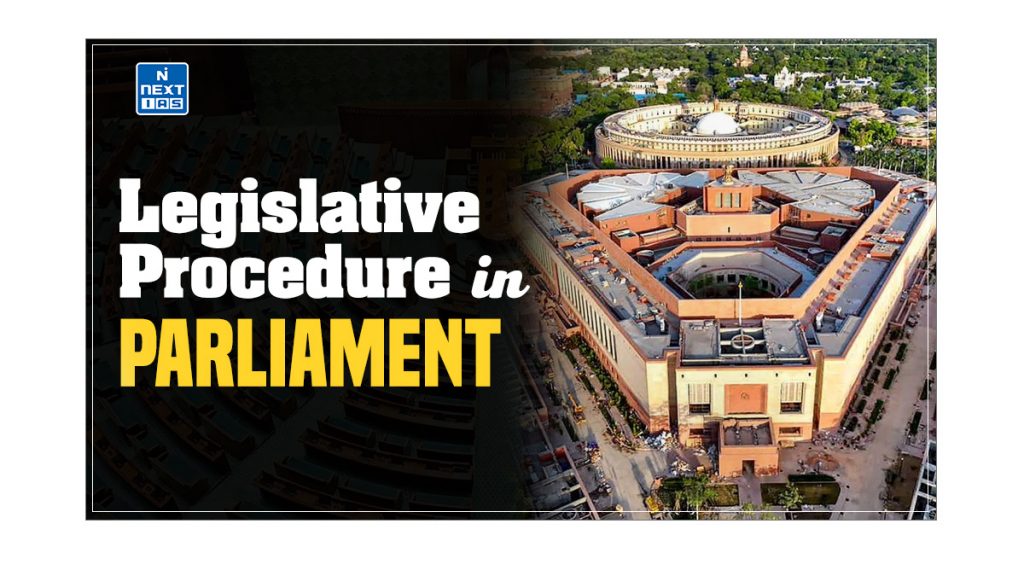
The Legislative Procedure in Parliament lies at the heart of the functioning of the Parliament as the supreme legislative body of India. Learning about this procedure is important to understand the functioning of the legislature in India. This article of NEXT IAS aims to explain the meaning of the legislative procedure in Parliament and the procedures for passing bills, including Ordinary Bills, Money Bills, Financial Bills, Constitutional Amendment Bills, and other related concepts.
Meaning of Legislative Procedure in Parliament
- The Legislative Procedure in Parliament refers to the structured series of steps through which proposed legislations (i.e. bills) are introduced, debated, amended, and ultimately either passed into laws or rejected.
- In other words, it can be simply called the step-by-step process followed by the Parliament to turn proposed legislation (i.e. bills) into laws.
- Thus, it’s basically the roadmap a bill takes to become an Act.
What are Bills?
- In the context of Parliament, Bills are proposals for new laws, or amendments to existing laws, that are presented for debate and approval or rejection before the Parliament.
- If a bill successfully passes through all the required stages in the Parliament and receives final approval, it becomes an Act of Parliament, thereby becoming law.
- Depending on the basis of content and passage procedure, there are mainly four types of bills:
- Ordinary Bills,
- Money Bills,
- Financial Bills, and
- Constitutional Amendment Bills.
Read our detailed article on the Types of Bills.
Legislative Procedure in Indian Parliament
- The Constitution of India has laid down separate procedures for the enactment of all four types of bills – Ordinary Bills, Money Bills, Financial Bills, and Constitutional Amendment Bills.
- The sections that follow explain in detail the legislative procedure for each type of bill.
Passing of Ordinary Bills
- An Ordinary Bill can be introduced in either House of Parliament, either by a minister or by any other member of the House.
- In order to be declared passed and become an Act, every ordinary bill has to pass through the following five stages in the Parliament.
First Reading
- The member who wants to introduce the Bill has to ask for the leave of the House.
- Once the leave is granted by the House, the member introduces the Bill by reading its title and objectives.
- Later, the Bill is published in the Gazette of India.
- The processes from the introduction of the Bill to its publication in the Gazette of India constitute the First Reading of the Bill.
- No discussion on the bill takes place at this stage.
| Note: A Bill may be directly published in the Gazette of India before its introduction in any House of the Parliament. In such cases, leave of the House to introduce the bill is not necessary. |
Second Reading
- This stage involves general as well as detailed scrutiny of the Bill.
- It is at this stage that the Bill assumes its final shape. Hence, it forms the most important stage in the enactment of a bill.
- This stage involves three sub-stages which are as follows:
- Stage of General Discussion,
- Committee Stage, and
- Consideration Stage.
Stage of General Discussion
- During this stage, the printed copies of the bill are distributed to all members of the House.
- Here, the principles and provisions of the bill are discussed generally, but the details of the bills are not discussed.
- At this stage, the House can take any of the following four actions:
- Take the bill into consideration immediately or on some other fixed date,
- Refer the bill to a Select Committee of the House,
- Refer the bill to a Joint Committee of the two Houses,
- Circulate the bill to elicit public opinion.
| Note: Select Committee – It consists of Members of only that House where the bill has originated. Joint Committee – It consists of Members of both the Houses of Parliament. |
Committee Stage
- If the Bill is referred to a Select Committee or Joint Committee, the committee examines the bill thoroughly and in detail, clause by clause.
- The committee can also amend its provisions, but without altering the principles underlying it.
- After completing the scrutiny and discussion, the committee reports the bill back to the House.
Consideration Stage
- After receiving the Bill from the Committee, the House considers the provisions of the bill clause by clause.
- Each clause is discussed and voted upon separately.
- The members can also move amendments and if accepted, they become part of the bill.
Third Reading
- At this stage, the debate is confined to acceptance or rejection of the bill as a whole, and no amendments are allowed.
- If the majority of members present and voting accept the bill, the bill is regarded as passed by the House.
- Thereafter, the bill is authenticated by the Presiding Officer of the House and transmitted to the Second House for consideration and approval.
| Note: A bill is deemed to have been passed by the Parliament only when both the Houses have agreed to it, either with or without amendments. |
Bill in Second House
- In the Second House also, the bill passes through all three stages – first reading, second reading, and third reading.
- The Second House has four alternatives before it:
- Pass the bill as sent by the First House, without any amendments,
- Pass the bill with amendments and return it to the First House for reconsideration,
- Reject the bill altogether,
- Not take any action and thus keep the bill pending.
- If the Second House passes the bill without any amendments or the First House accepts the amendments suggested by the Second House, the bill is deemed to have been passed by both Houses, and the same is sent to the President for his assent.
- If the First House rejects the amendments suggested by the Second House, the Second House rejects the bill altogether, or the Second House does not take any action for six months, a situation of deadlock arises.
- To resolve such a deadlock, the President can summon a joint sitting of two Houses.
- If the majority of members present and voting in the joint sitting approve the bill, the bill is deemed to have been passed by both the Houses of Parliament.
Assent of President
- Every bill after being passed by both Houses of Parliament (either singly or at a joint sitting) is presented to the President for his/her assent.
- In the case of an Ordinary Bill, the President has three alternatives before him/her:
- Give his/her assent to the bill,
- Withhold his/her assent to the bill,
- Return the bill for reconsideration of the Houses.
- If the President gives his/her assent to the bill, the bill becomes an Act and is placed on the Statute Book.
- If the President withholds his/her assent to the bill, it ends and does not become an Act.
- If the President returns the bill for reconsideration and if it is passed by both Houses again with or without amendments and presented to the President for his/her assent, the President must give his/her assent to the bill.
Passing of Money Bills
- Money Bills are bills that contain ‘only’ provisions mentioned in Article 110 of the Indian Constitution.
- A detailed description of Money Bills is given in the section above.
- A Money Bill can be introduced only in the Lok Sabha, only by a minister, and only on the recommendation of the President.
- If any question arises whether a bill is a Money bill or not, the decision of the Speaker of Lok Sabha is final.
- His decision in this regard cannot be questioned in any court or in either house or even by the President of India.
- After a Money bill is passed by the Lok Sabha, it is transmitted to the Rajya Sabha by the Speaker, endorsing it as a Money Bill.
- The Rajya Sabha has very restricted powers w.r.t. Money Bills:
- Rajya Sabha cannot reject or amend a Money bill.
- Rajya Sabha can only make recommendations.
- Rajya Sabha must return the bill within 14 days, with or without recommendations.
- The Lok Sabha can either accept or reject all or any of the recommendations of Rajya Sabha w.r.t. a Money bill.
- If Lok Sabha accepts any recommendation, the bill is deemed to have been passed by both the Houses in the modified form.
- If Lok Sabha does not accept any recommendation, the bill is deemed to have passed by both the Houses in the form originally passed by Lok Sabha.
- If the Rajya Sabha does not return the bill within 14 days, the bill is deemed to have been passed by both the Houses in the form originally passed by Lok Sabha.
- Thus, unlike in the case of Ordinary Bills, where both the Lok Sabha and the Rajya Sabha have equal powers, w.r.t. Money Bills, the Lok Sabha has more powers than the Rajya Sabha.
- Once a Money Bill is passed by both the Houses, it is presented to the President.
- When a Money bill is presented to the President, he/she may either give his/her assent or withhold his/her assent, but cannot return the bill for reconsideration by the Houses of Parliament.
- Normally, the President gives his assent to a Money bill as it is introduced with his/her prior permission.
Passing of Financial Bills
- Financial Bills refer to those bills that deal with fiscal matters i.e. revenue or expenditure.
- A detailed description of Financial Bills is given in the section above.
- The procedures for passing various types of Financial Bills are described below.
Financial Bills (I)
- A Financial Bill (I) is similar to a Money bill in the following two respects:
- Both of them can be introduced only in Lok Sabha.
- Both of them can be introduced only on the recommendation of the President.
- In all other respects, a Financial Bill (I) is governed by the same legislative procedure applicable to an ordinary bill. Accordingly,
- It can be rejected or amended by the Rajya Sabha.
- In case of a disagreement between the two Houses over such a bill, the President can summon a joint sitting of the two Houses to resolve the deadlock.
- When the bill is presented to the President, he/she can:
- either give his/her assent to the bill,
- withhold his/her assent to the bill or
- return the bill for reconsideration by the Houses of Parliament.
Financial Bill (II)
- Financial bill (II) is treated as an ordinary bill in all respects and governed by the same legislative procedure that is applicable to an Ordinary Bill.
- Hence, a Financial bill (II) can be introduced in either House of Parliament and a recommendation of the President is not necessary for its introduction.
- However, the Financial Bill (II) has one special feature – It cannot be passed by either House unless the President has recommended to that House the consideration of the bill.
- Thus, although the recommendation of the President is not required at the introduction stage, it is required at the consideration stage.
- Similar to an Ordinary Bill, a Financial Bill (II) can be either rejected or amended by either House of Parliament.
- In case of a disagreement between the two Houses over such a bill, the President can summon a joint sitting of the two Houses to resolve the deadlock.
- When the bill is presented to the President, he/she can:
- either give his/her assent to the bill,
- withhold his/her assent to the bill or
- return the bill for reconsideration by the Houses of Parliament.
Passing of Constitutional Amendment Bills
Article 368 of the Constitution of India has defined the procedure for amendment of the Constitution.
Read our detailed article on the procedure for passing the Constitutional Amendment Bills.
Deadlock in Legislative Procedure
- In the context of legislative procedure, a Deadlock refers to a situation where progress on a bill gets stuck due to disagreement between different houses of the Parliament.
- As per the legislative procedure in the Indian Parliament, a deadlock is deemed to have taken place under any one of the following three situations after a bill has been passed by one House and transmitted to the other House:
- if the bill is rejected by the other House;
- if the Houses have finally disagreed as to the amendments to be made in the bill; or
- if more than six months have elapsed from the date of the receipt of the bill by the other House without the bill being passed by it.
- The Constitution of India provides for the provision of a Joint Sitting of both Houses of Parliament to resolve the situation of a Deadlock.
Joint Sitting of Two Houses of Parliament
- A joint sitting is an extraordinary machinery provided by the Constitution to resolve a deadlock between the two Houses over the passage of a bill in the Parliament.
- The President of India is empowered to call a Joint Sitting of the two houses for the purpose of deliberating and voting on the bill which is facing a situation of Deadlock.
- The provision of joint sitting is applicable only to:
- Ordinary Bills, and
- Financial Bills
- The provision of joint sitting is not applicable to:
- Money Bills – Since the Lok Sabha has overriding powers in the case of Money Bills, a Joint Sitting is not required in this case.
- Constitutional Amendment Bills – As per the Constitutional provisions, a Constitutional Amendment Bill has to be passed by each House separately. Thus, a Joint Sitting is not applicable in this case.
- In reckoning the period of 6 months for consideration of a situation of Deadlock, no account shall be taken of any period during which the other House to which the bills have been sent is prorogued or adjourned for more than four consecutive days.
- If the bill under dispute has already lapsed due to the dissolution of Lok Sabha, no joint sitting can be summoned.
- But, the joint sitting can be held if the Lok Sabha is dissolved after the President has notified his/her intention to summon such a sitting (as the bill does lapse in this case).
- After the President notifies his/her intention to summon a joint sitting, none of the House can proceed further with the concerned bill.
- The joint sitting of the two Houses is presided over by the Speaker of Lok Sabha.
- In his/her absence, the Deputy Speaker of Lok Sabha, and if he is also absent, the Deputy Chairman of Rajya Sabha presides over it.
- If the Deputy Chairman of Rajya Sabha is also absent, such other person as may be determined by the members present at the joint sitting presides over it.
- The Chairman of Rajya Sabha does not preside over a joint sitting as he is not a member of either House of Parliament.
- The quorum to constitute a joint sitting is 1/10th of the total number of members of the two Houses of Parliament.
- A joint sitting is governed by the Rules of Procedure of the Lok Sabha, and not of the Rajya Sabha.
- If the bill in dispute is passed by a majority of the total number of members of both Houses present and voting in the joint sitting, the bill is deemed to have been passed by both Houses of Parliament.
- As specified by the Constitution, at a joint sitting, new amendments to the bill cannot be proposed, except in two cases:
- those amendments that have caused final disagreement between the Houses,
- those amendments that might have become necessary due to the delay in the passage of the bill.
| Note: Since 1950, the bills that have been passed at joint sittings of both Houses of Parliament are: – Dowry Prohibition Bill, 1960. – Banking Service Commission (Repeal) Bill, 1977. – Prevention of Terrorism Bill, 2002. |
Conclusion
The Legislative Procedure in Parliament is a testament to the country’s commitment to democratic governance and the rule of law. This intricate process, with its distinct stages, aims to ensure transparency and accountability in the enactment of laws that cater to the nation’s evolving needs. As India continues to evolve, the legislative procedure will remain crucial in upholding the principles of representative democracy and safeguarding the integrity of the parliamentary system.
Frequently Asked Questions (FAQs)
What is the law-making function of the Parliament?
The primary law-making function of the Parliament is to enact new laws, amend existing ones, and repeal outdated or ineffective legislation. This is achieved through introducing and debating bills, passing them into law, and providing ongoing oversight and accountability over the implementation of these laws. The Parliament’s legislative power is a crucial part of its constitutional duties, allowing it to shape the legal and policy framework of the country.
What are the different types of bills that can be introduced in Parliament?
There are mainly four types of bills in the Indian Parliament:
1. Ordinary Bills,
2. Money Bills,
3. Financial Bills, and
4. Constitutional Amendment Bills.

